Request a tretinoin prescription online
![]() Response time: 1-2 working days
Response time: 1-2 working days
- Board-certified dermatologists
- Service available in all 50 states
- Choice of generic or customized formulas
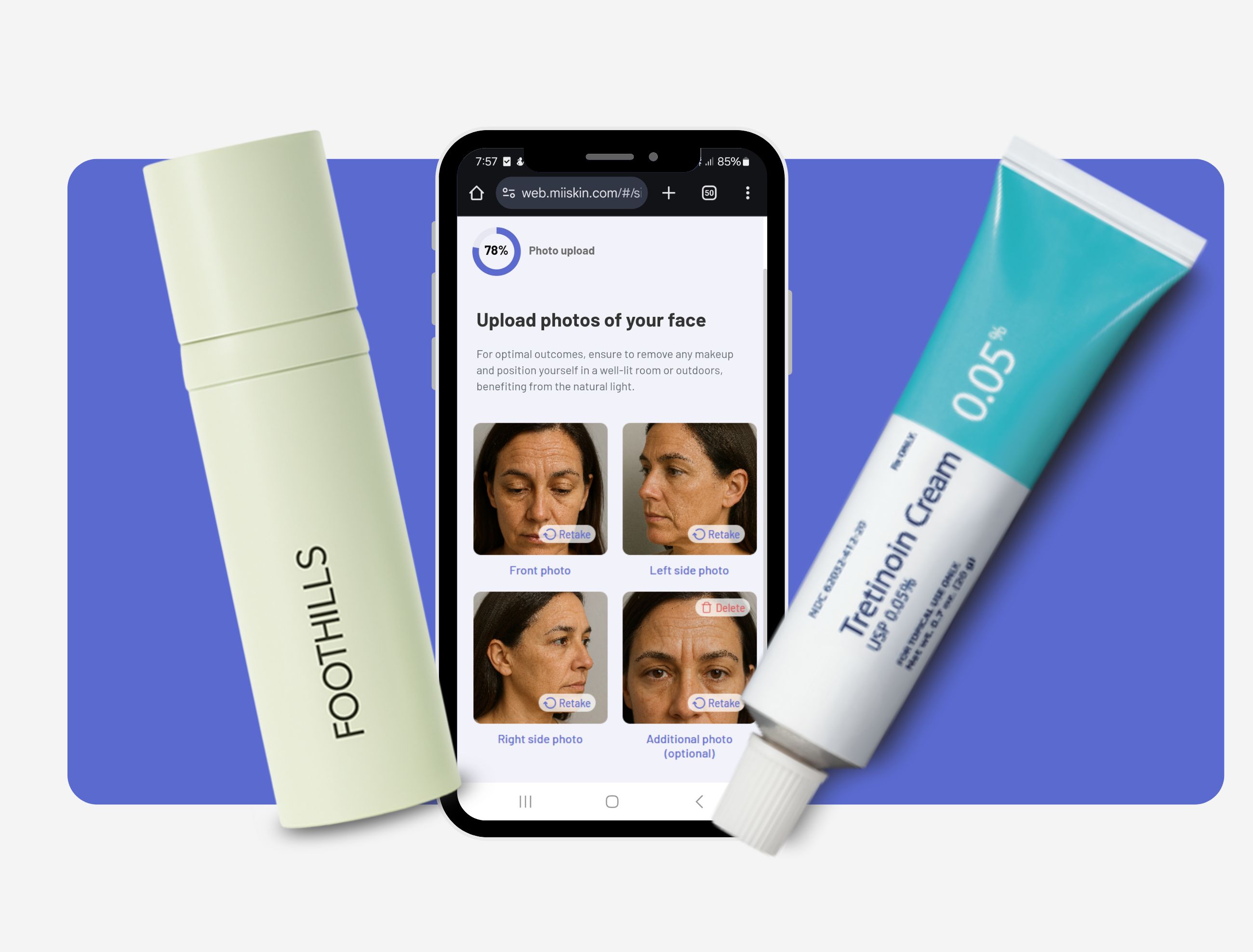
Table of Content:
What is tretinoin? | A seamless experience | How to get tretinoin? | Benefits | Uses | How does it work? | What patients say | Strengths | Precautions | The tretinoin purge | How to use it? | Tretinoin and other ingredients |FAQ
Content last updated: October 2025
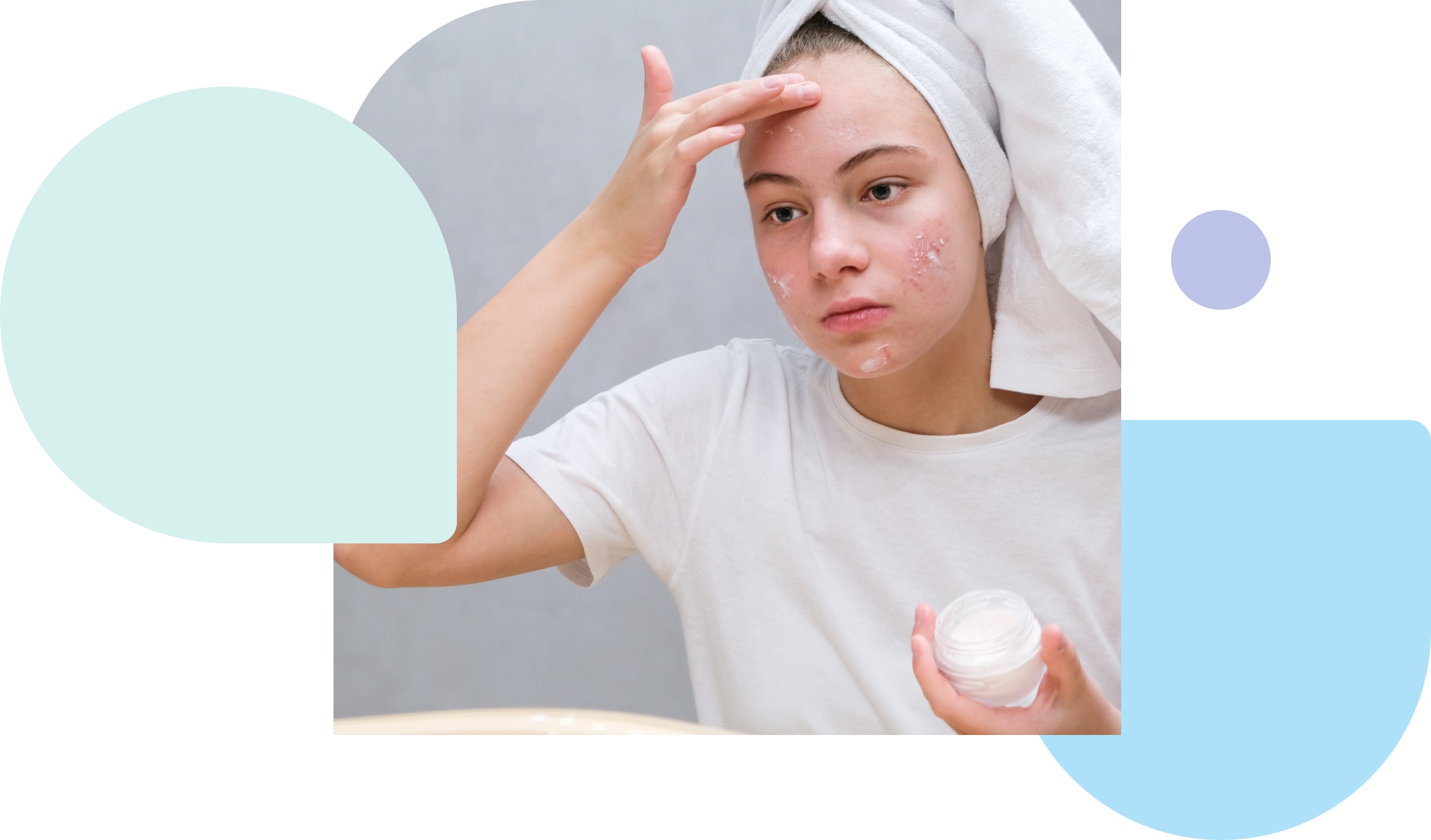
What is tretinoin?
Tretinoin (generic version of Retin-A) is a topical prescription medication widely used by dermatologists to treat acne, hyperpigmentation, wrinkles and sun damage1.
Tretinoin works by accelerating the lifecycle of skin cells and boosting new collagen formation. It belongs to a family of synthetic and natural compounds called retinoids that are derived from Vitamin A2.
A seamless teledermatology + pharmacy experience
Miiskin has now partnered with Foothills Pharmacy, a leading compounding pharmacy, to make prescription skin care effortless.
Now, when your dermatologist prescribes treatment via Miiskin, you can choose Foothills as your pharmacy and order your medication via the Miiskin platform. They will send a payment link and after payment is completed, your medication will be shipped for free.
Most customized Foothills formulas are $48.99, with a few advanced formulas priced at $58.99 and some hair care formulas priced at $68.99.
Oral medications from Foothills typically cost between $24.99 – $38.99, based on the pill count your clinician prescribes (30, 60, 90, or 120 pills).
Important Disclaimer: Compounded medications are not reviewed by the FDA for safety or efficacy.
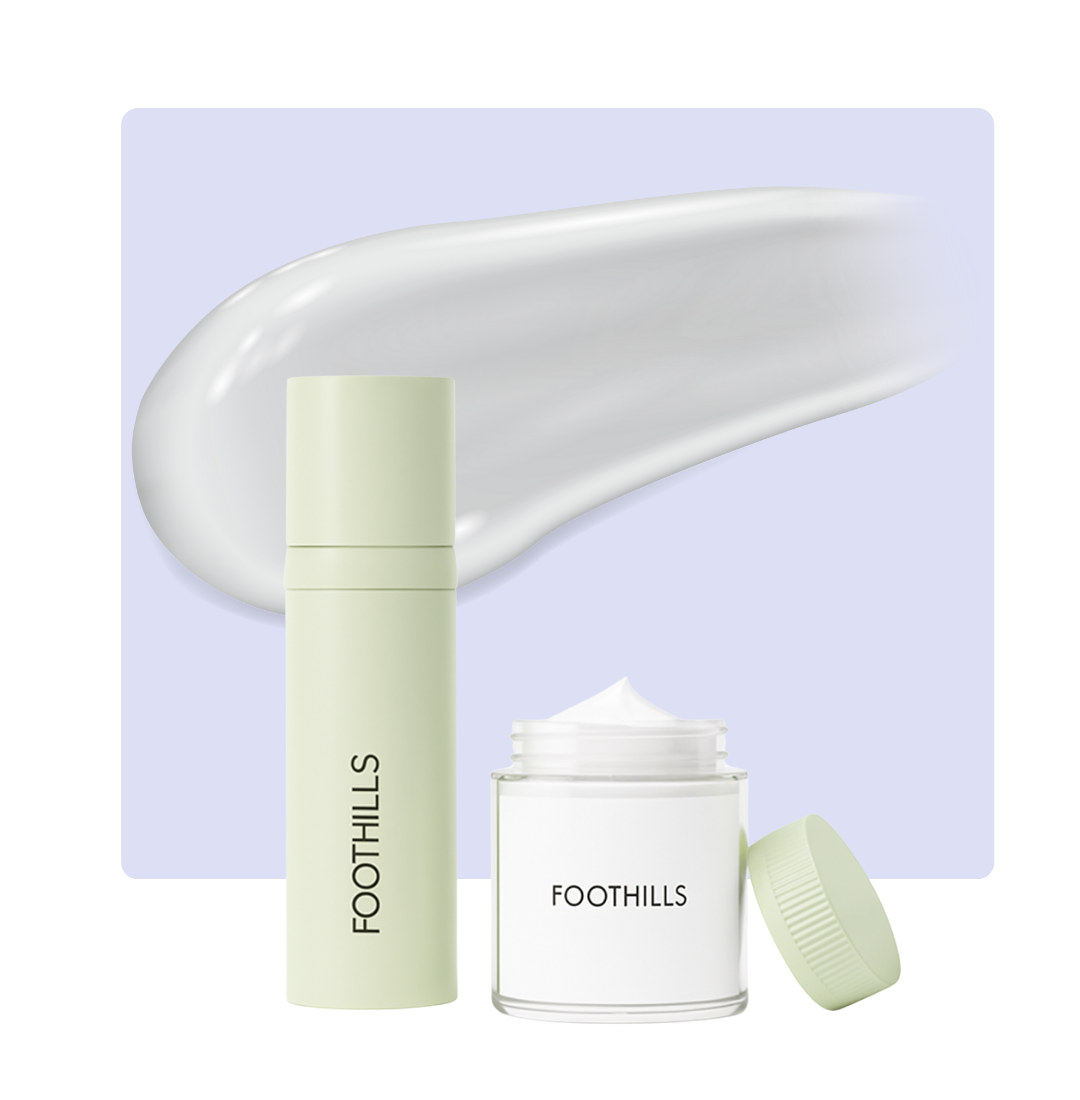
How to get tretinoin online?
How to get a tretinoin prescription?
To get a tretinoin prescription, you can have an online consultation with a board-certified dermatologist through Miiskin.
How much does it cost to get a tretinoin prescription online?
The consultation fee with an online dermatologist via Miiskin is around $59 for first-time patients and $39 for prescription renewals.
How to get a tretinoin then?
Your dermatologist can prescribe to any pharmacy in the country if you want a generic medication.
If you are interested in a customized tretinoin formula, select Foothills as your preferred pharmacy. Most Foothills formulas are just $48.99 and they include free delivery.
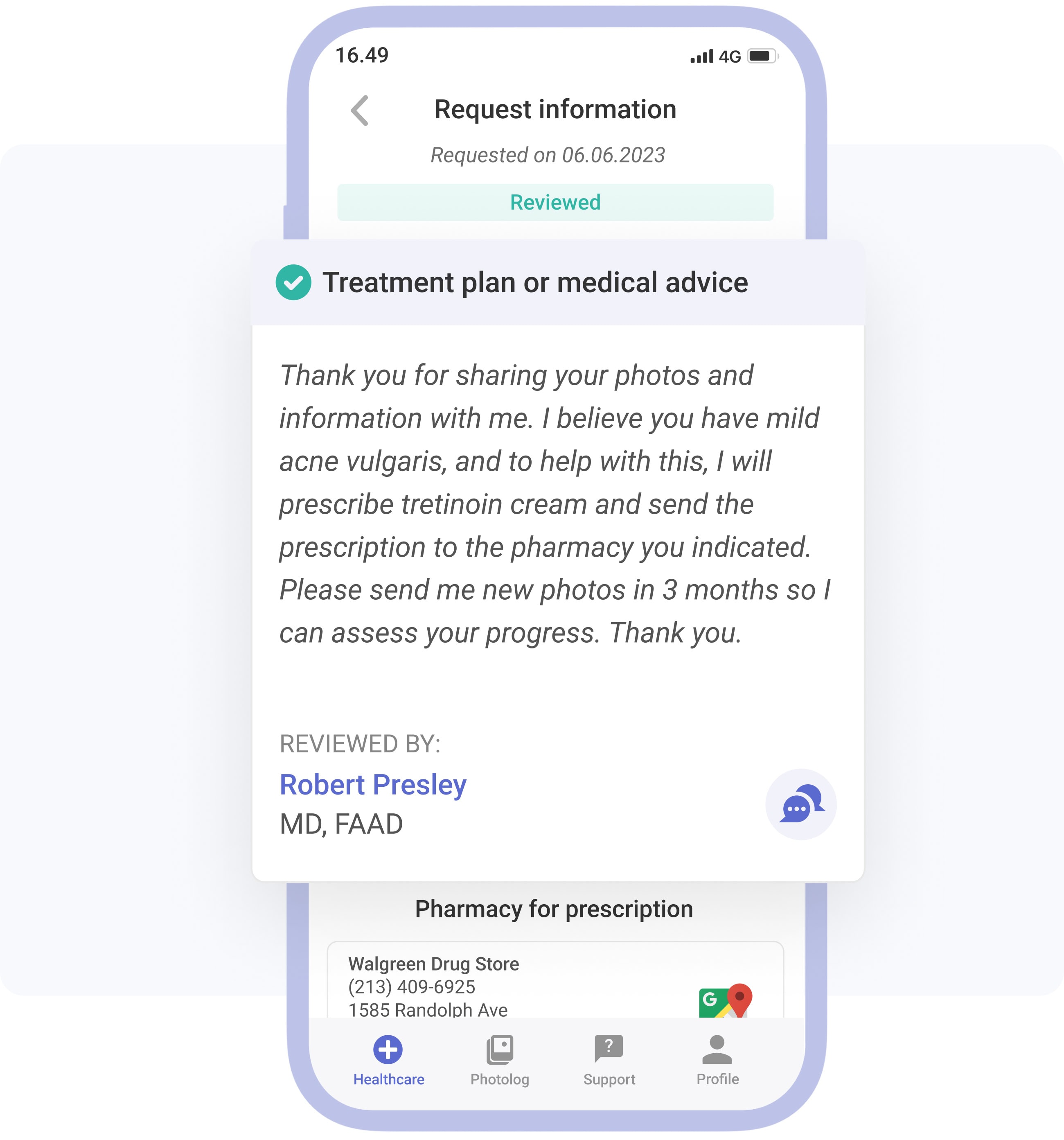
Benefits of tretinoin

Stimulates collagen for firmer skin

Reduces fine lines and wrinkles

Smooths skin texture and tone

Fades dark spots and discoloration

Unclogs pores and reduces breakouts

Prevents future acne formation
What is tretinoin cream or gel used for?
Tretinoin is approved by the FDA for the treatment of:

Acne and acne scars

Facial wrinkles
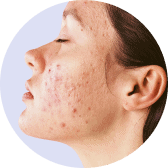
Skin roughness
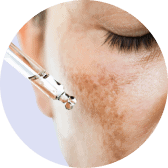
Hyperpigmentation3
Brand names of tretinoin gels or creams
- Retin – A
- Altreno
- Atralin
- Avita
- Refissa
- Renova
- Tretin – X
- Retin – A micro

Get an online tretinoin prescription via Miiskin
- Select “Start consultation” to sign up.
- Fill out the consultation form and take photos of your skin.
- An independent dermatologist will prescribe tretinoin to you, if medically appropriate.
- Buy tretinoin affordably from the pharmacy of your choice.
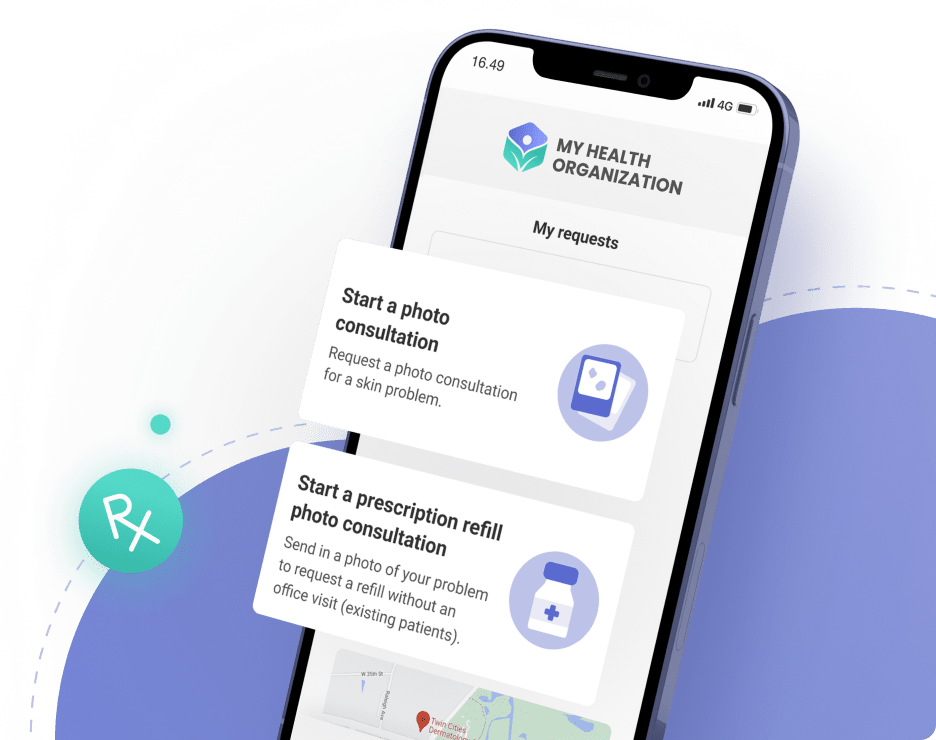
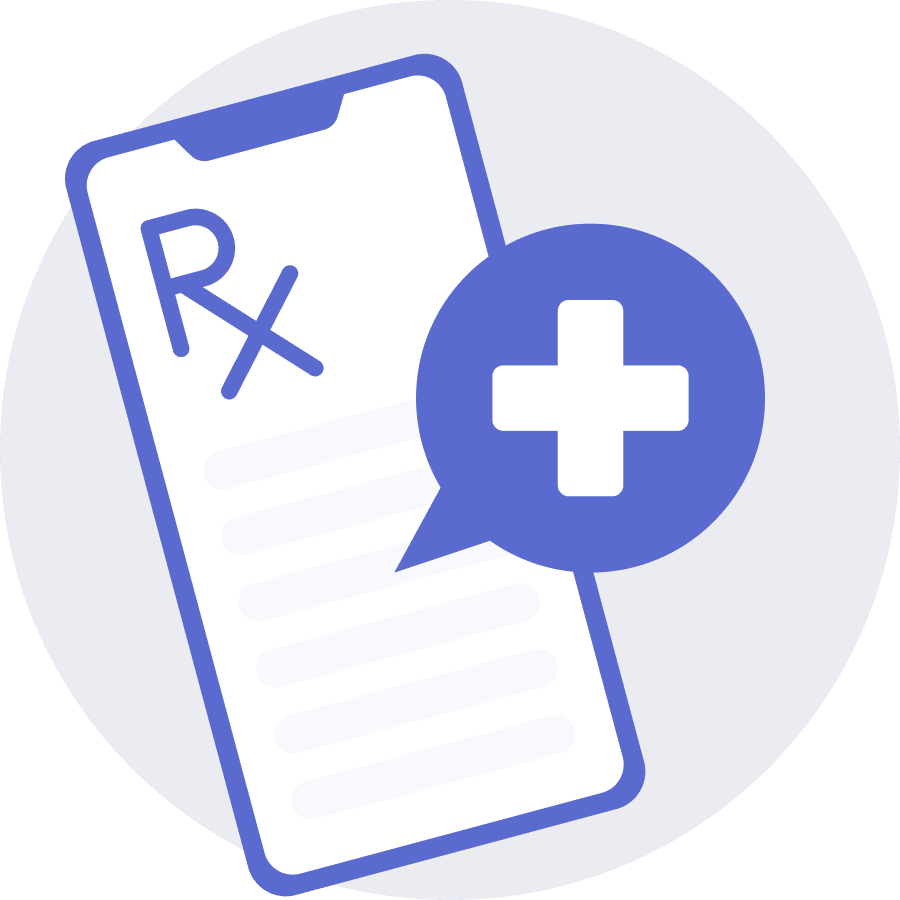
How to get a prescription for tretinoin?
Miiskin connects with a board-certified, online dermatologist. After reviewing your case, if the dermatologist determines that tretinoin is safe and appropriate for you, they will issue your prescription to the pharmacy of your choosing.
Tretinoin explained
How does tretinoin work?
Tretinoin stimulates cell renewal in the epidermis, enhancing the cell layer, reducing pigmentation and normalizing sun-damaged cells4.
Tretinoin also works in the dermis promoting the production of collagen and elastin thickening the dermal layer and making the skin appear more plump5.
According to multiple research, tretinoin gels and creams are a safe and effective therapeutic modality for the long-term treatment of acne and photoaging.6 78

Most common tretinoin strengths prescribed
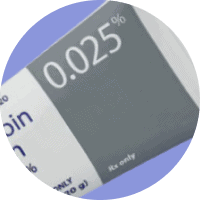
Tretinoin Cream 0.025%
Tretinoin cream at 0.025% concentration is a gentler option, often recommended for patients new to tretinoin or those with sensitive skin. Its lower strength allows for a gradual introduction to tretinoin, reducing the chance of irritation. It’s commonly used for mild concerns such as fine lines, uneven skin tone, and mild acne.
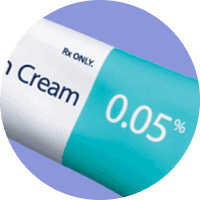
Tretinoin Cream 0.05%
Tretinoin cream 0.05% works faster and produces more visible results than the 0.025% cream. It’s a moderate-strength option suitable for addressing more prominent signs of aging, moderate acne, and persistent hyperpigmentation. Although it carries a higher risk of side effects like dryness, following your doctor’s guidance can help manage any reactions and maximize its effectiveness.
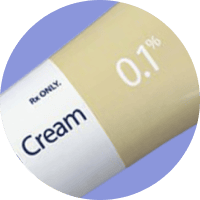
Tretinoin Cream 0.1%
Tretinoin cream 0.1% is considered high-strength and is typically reserved for more intense treatment needs. It is often recommended for individuals with more severe skin concerns, such as deep wrinkles, pronounced signs of aging, or stubborn acne that requires stronger intervention.
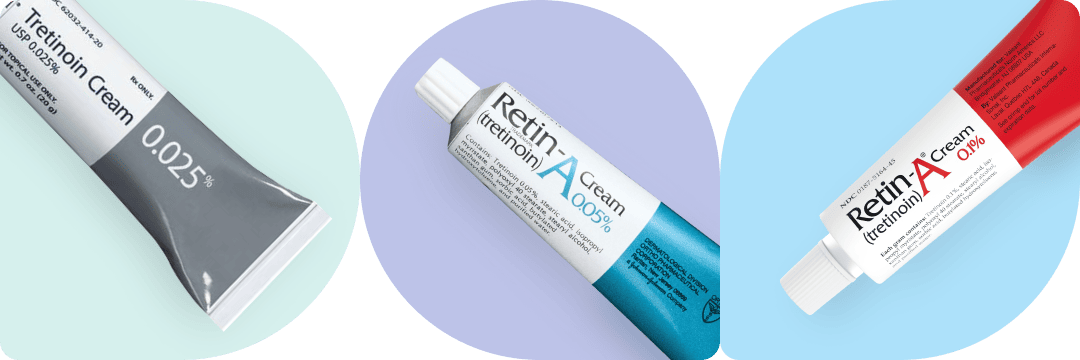
Warnings, side effects and purging
Warning and precautions when using tretinoin creams or gels
This medication should only be used under medical supervision and it is advised that women use effective contraception when using tretinoin.
Tretinoin is considered teratogenic, and therefore it cannot be used by women who want to become pregnant, are pregnant, or are breastfeeding because it may cause serious harm to the fetus13 14.
Tretinoin is likely to make your skin more sensitive to sunlight so you should apply sunscreen with SPF 50 factor every morning while using this product and reapply every two hours when outdoors.
Tretinoin may cause skin irritation when you first start using it, follow the precise instructions of your healthcare provider to minimize unwanted side effects.
Do not combine tretinoin with other acne or pigmentation medications, unless indicated by your doctor.
Side effects of tretinoin
- Redness
- Peeling
- Itching
- Burning/Stinging
- Dryness15
What is the tretinoin purge?
The tretinoin purge (also known as tretinoin uglies) is a very common skin reaction that occurs when a patient uses tretinoin for the first time.

How to get started once tretinoin is prescribed?
You should always follow the precise instructions of your healthcare provider, because your treatment plan will depend on your skin condition and your skin type. However, as a general rule, if you have never used tretinoin, here is a good way to start.
- First 2 to 4 weeks:
Apply tretinoin .025% two nights per week in the evenings - Following 2 weeks:
Apply tretinoin every other night - After 6 to 8 weeks of use:
If your skin tolerates the product well, apply the product every night
It is also important to find a balance that is right for you. Your skin may not tolerate the application of tretinoin every day even after weeks of use and you may notice that your skin improves by applying tretinoin every other day instead of daily.
How to use Tretinoin correctly
Watch this 2-minute video where doctor Anna Chacon, board-certified dermatologist in the Miiskin network, explains how to use tretinoin the proper way to minimize the potential of irritation.
Click to read video transcript
How to Use Tretinoin
– Start with a gentle cleanser.
– Wash your face with lukewarm water and pat dry with a soft towel.
– Always make sure your skin is completely dry before applying tretinoin — wait about 15 to 20 minutes. This helps minimize irritation.
– Before applying tretinoin, always start with a gentle, non-comedogenic moisturizer. This helps protect your skin barrier and reduces dryness and peeling.
– Next, squeeze out a pea-sized amount — that’s really all you need for your entire face. Dot the tretinoin across your forehead, both cheeks, nose, and chin. Then gently spread it evenly over your entire face.
– Avoid the corners of your mouth, the creases around your nose, and the delicate skin around your eyes — these areas are more prone to irritation.
– Apply an additional layer of moisturizer across the face and neck. This is optional but recommended, especially if you have sensitive skin. You can also use a hyaluronic serum instead of a moisturizing cream.
– Remember, tretinoin takes time to work. You may not see results for several weeks, but consistency is key.
– Tretinoin requires a prescription from a dermatologist. If you are interested in getting a personalized tretinoin formula — with up to three additional ingredients for your skin — I am here to help.
Click the link to start your consultation today.
What ingredients can be safely
combined with tretinoin?
![]() Sunscreen SPF 50
Sunscreen SPF 50
![]() Hyaluronic acid
Hyaluronic acid
![]() Non-greasy moisturizer
Non-greasy moisturizer
![]() Azelaic acid
Azelaic acid
![]() Niacinamide
Niacinamide
![]() Peptides
Peptides
![]() Ceramides
Ceramides
What ingredients should not be combined with tretinoin?
- Benzoyl peroxide*
- Glycolic acid*
- Lactic acid*
- Salicylic acid*
- Retinol
- Tazarotene
- Trifarotene
- Adapalene
*Unless instructed by a dermatologist
Provider & Prescription Information
Miiskin connects patients with independent dermatologists who provide care through their private practices. Compounded prescriptions can be ordered via Miiskin and are dispensed by Foothills pharmacy. Standard medications can be issued for any local pharmacy.
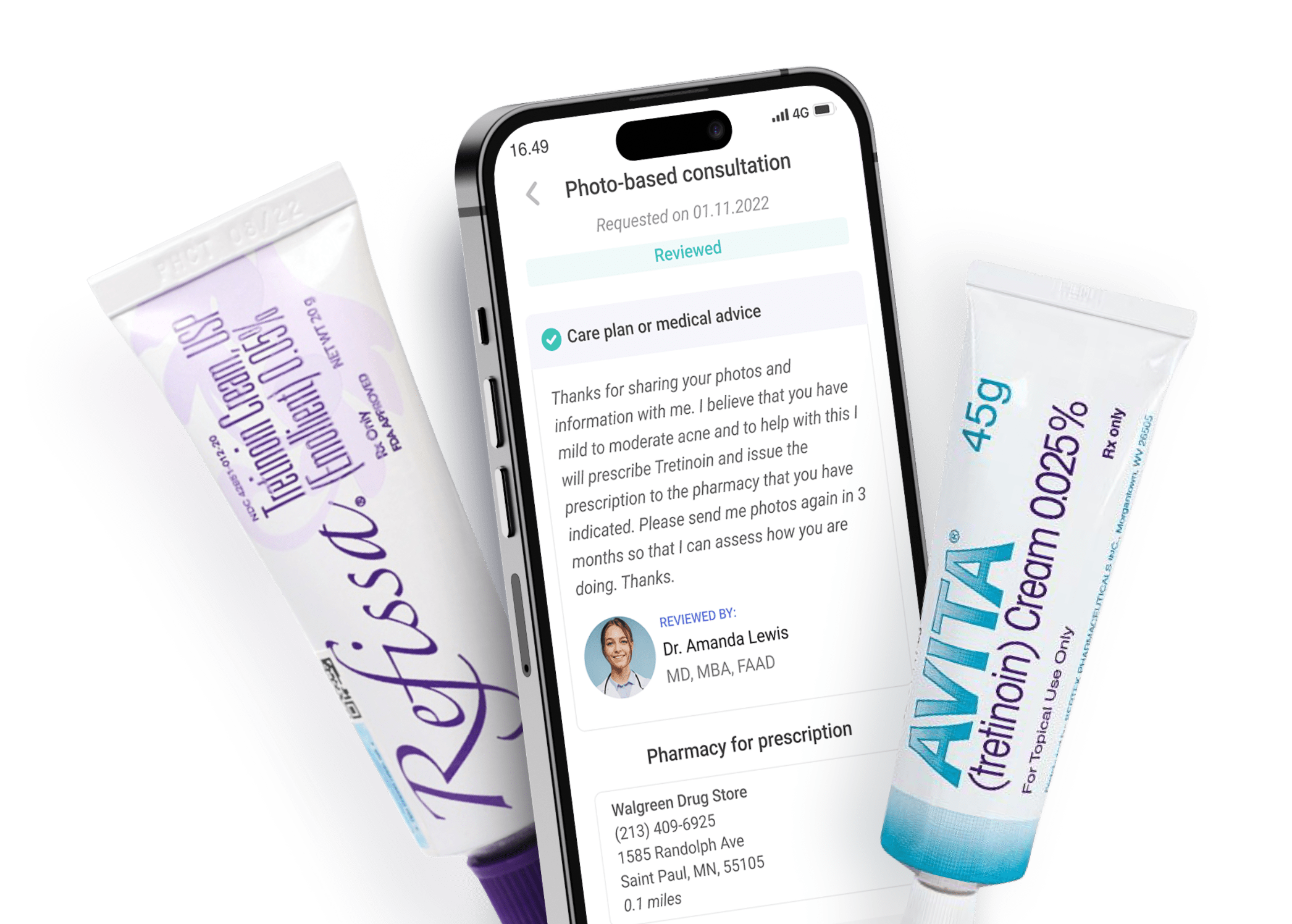
Start a virtual consultation to request Tretinoin
References:
1https://www.ncbi.nlm.nih.gov/books/NBK557478/
2https://www.ncbi.nlm.nih.gov/pmc/articles/PMC9112391/
3https://www.ncbi.nlm.nih.gov/books/NBK557478/
4https://www.ncbi.nlm.nih.gov/books/NBK557478/
5https://www.ncbi.nlm.nih.gov/pmc/articles/PMC9112391/
6https://www.ncbi.nlm.nih.gov/pmc/articles/PMC9112391/
7https://jamanetwork.com/journals/jamadermatology/article-abstract/553009
8https://www.ncbi.nlm.nih.gov/pmc/articles/PMC5574737/
9https://link.springer.com/article/10.2165/00002512-199506060-00008
10https://www.ncbi.nlm.nih.gov/pmc/articles/PMC3225141/
11https://pubmed.ncbi.nlm.nih.gov/16045694/
12https://www.ncbi.nlm.nih.gov/pmc/articles/PMC3225141/
13https://rarediseases.info.nih.gov/diseases/517/fetal-retinoid-syndrome
14https://pubmed.ncbi.nlm.nih.gov/26897386/
15https://www.ncbi.nlm.nih.gov/pmc/articles/PMC9112391/


 Need a tretinoin prescription?
Need a tretinoin prescription?